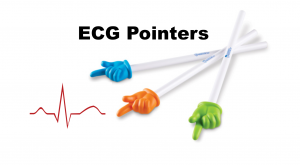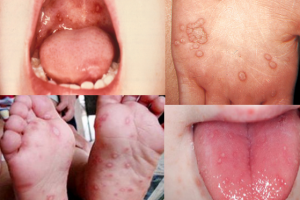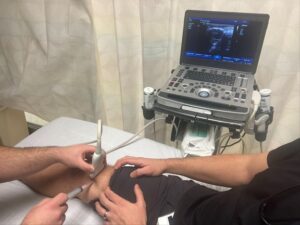Today on the emDOCs cast with Brit Long, MD (@long_brit) and Rachel Bridwell, MD (@rebridwell), we cover the challenge of Ludwig’s Angina
Ludwig’s Angina
Epidemiology:
-
- Risk Factors: Poor dental hygiene, recent dental infection, immunosuppression, IVDU, DM, chronic EtOH abuse, recent tongue piercing.
- Odontogenic infection accounts for 70% of Ludwig’s Angina.1
- Most commonly periapical abscesses of mandibular molars (esp. 2ndand 3rd) in adults.
- URI more commonly causes Ludwig’s Angina in children.1
- IgG hypogammaglobulinemia possible risk factor for severe complication.2
- Named for Karl Friedrich Wilhelm von Ludwig in 1836, who first described the fatal and rapidly progressive infection of the mouth floor.
Anatomy and Pathophysiology:
-
- Mylohyoid subdivides submandibular space:
- Sublingual space
- Submaxillary (submylohyoid) space
- Infection extends posteriorly and superiorly, elevating tongue against hypopharynx.
- Untreated, extension inferiorly to retropharyngeal space and into superior mediastinum.3
- Polymicrobial oral flora, but most common bacterial culprits:4
- Enterococcus
- E. coli
- Fusobacterium
- Streptococcus spp.
- S. aureus
- Klebsiella pneumonia
- Actinomyces spp.
- Mylohyoid subdivides submandibular space:
Clinical Presentation:
-
- Initially oral infection, progressing to trismus, tongue protrusion, inability to handle secretions, odynophagia, tripoding, respiratory distress. Patients may demonstrate signs of systemic toxicity with fever, tachycardia, and hypotension.
Evaluation:
-
- Assess ABCs and begin resuscitation.
- Patient may be leaning forward to optimize diameter of the airway.
- Perform a complete physical examination.
- ENT: Decreased intercisal mouth opening distance, indurated mouth floor, brawny neck with submandibular and submental edema, sublingual and submental lymphadenopathy, superior displacement of tongue.
- Integumentary: Erythema with inferior tracking denotes spreading infection.
- Laboratory evaluation:
- CBC, BMP, VBG with lactate.
- Imaging: Consider CT head/neck to assess anatomic reaches of infection if clinical situation permits. Highly accurate, but ensure the patient can tolerate lying flat prior to going to CT.
Treatment:
-
- ABCs—Sit upright.
- Early airway management is paramount.
- Intubation often unsuccessful, with a majority of cases requiring surgical airways.4-5
- Source control of infection—Typically to OR for needle aspiration versus surgical decompression.
- Early antibiotics—Coverage for beta-lactamase producing aerobic or anaerobic GPC, GNR +/- MRSA
- PCN G + metronidazole, clindamycin, or unasyn.6
- Steroids
- 10 mg dexamethasoneà4 mg q6hrs x 48 hrs
- Thought to chemically decompress for airway protection and increase antibiotic penetration.6
- 10 mg dexamethasoneà4 mg q6hrs x 48 hrs
- Nebulized epinephrine
- Resuscitation and pain control
Disposition:
-
- Consult ENT, OMFS, and anesthesia for airway assistance .and surgical decompression of infection, extraction of infected teeth.
- Awake fiberoptic vs surgical airway
- Admit to ICU.
- May progress to cervical necrotizing fasciitis or descending necrotizing mediastinitis through carotid sheath or retropharyngeal space.2
- Consider negative pressure wound therapy.7
- Consult ENT, OMFS, and anesthesia for airway assistance .and surgical decompression of infection, extraction of infected teeth.
Pearls:
-
- Mortality in treated Ludwig’s Angina is approximately 8%.7
- Airway compromise is the leading cause of death.8







